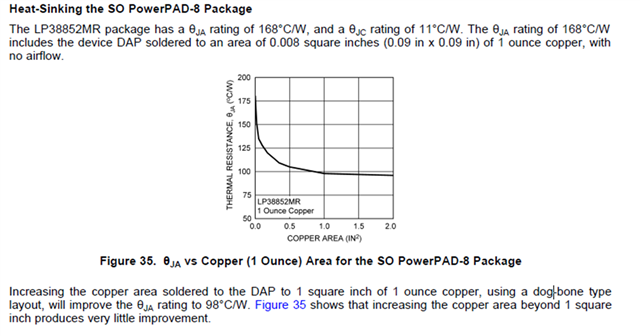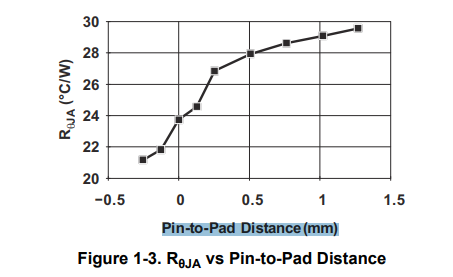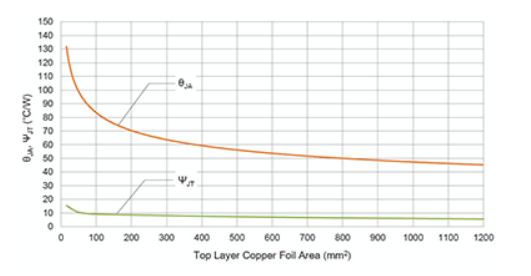Tool/software:
Hi all,
I would like to know the thermal resistance Rθja of LP38852MRX-ADJ/NOPB.
LP38852MRX-ADJ/NOPB is DDA Package 8-Pin SO PowerPAD.
In the past data sheet, there was a graph that changes with distance from Copper area.

In the latest data sheet, Rθja is 48.4, but I think it varies as shown in the graph above.
Is there a graph that shows how much it varies from 48.4?
In the application note below, it was mentioned that it varies with Pin-to-Pad Distance (mm), but I didn't understand what it meant.
Semiconductor and IC Package Thermal Metrics (Rev. D)

Best Regards,
Ryusuke


